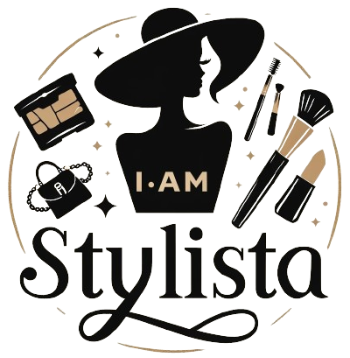Fashion has always been more than just clothes. It’s a reflection of our culture, values, and aspirations. Through fashion, we can trace the evolution of societies and their ever-changing norms. Let’s take a journey through iconic styles that have defined different eras in history, highlighting how fashion trends have mirrored societal shifts and cultural milestones.
The 18th Century: The Age of Extravagance
Rococo Elegance
The 18th century was characterized by opulence and extravagance, especially among the European aristocracy. This era saw the rise of the Rococo style, known for its elaborate and decorative aesthetic. Men and women alike indulged in luxurious fabrics like silk and satin, adorned with intricate lace, embroidery, and ribbons.
Personal Anecdote: I remember visiting a museum exhibit dedicated to 18th-century fashion. The sheer detail and craftsmanship of the garments were astounding. It was like stepping into a different world where fashion was an art form.
The Enlightenment Influence
As the century progressed, the Enlightenment’s emphasis on reason and simplicity began to influence fashion. The elaborate styles of the Rococo period gave way to more restrained and classical looks inspired by ancient Greece and Rome.
Unique Insight: Fashion historian Valerie Steele notes, “Fashion is not simply about clothes. It’s a reflection of our culture, our values, and our aspirations. Studying fashion history is like looking through a window into the past, revealing how people lived, loved, and expressed themselves” (Source: Fashion: A History from the 18th to the 20th Century).
The 19th Century: The Rise of Modern Fashion
Victorian Modesty
The Victorian era, named after Queen Victoria, brought a focus on modesty and propriety. Women’s fashion featured corsets, hoop skirts, and high necklines, while men wore tailored suits with waistcoats and top hats.
Personal Anecdote: Growing up, I was fascinated by my grandmother’s collection of Victorian-inspired lace gloves and bonnets. She always told stories of how her grandmother would wear such elegant outfits even for simple family gatherings.
The Industrial Revolution
The Industrial Revolution dramatically changed the fashion industry by making clothes more affordable and accessible. Ready-to-wear garments became popular, and fashion magazines emerged, spreading the latest trends to a wider audience.
Unique Insight: The advent of mass production in the 19th century democratized fashion, allowing people from different social classes to participate in trends that were once exclusive to the wealthy.
The 20th Century: A Century of Change
The Roaring Twenties
The 1920s, also known as the Roaring Twenties, brought a sense of liberation and rebellion against traditional norms. Women’s fashion underwent a radical transformation with the flapper dress—short, loose, and adorned with fringe and beads. Men embraced the sleek and modern look of tailored suits.
Personal Anecdote: My great-aunt used to share photos from her youth in the 1920s, where she and her friends sported bobbed haircuts and flapper dresses. It was a time of immense social change and newfound freedoms.
Mid-Century Modern
The 1950s saw a return to traditional gender roles and a focus on domesticity. Women’s fashion was characterized by cinched waists, full skirts, and an overall feminine silhouette, while men favored sharp suits and clean lines.
Unique Insight: Fashion designer Alexander McQueen once said, “Fashion should be a form of escapism, and not a form of imprisonment” (Source: Interview with Time Magazine). This sentiment was reflected in the playful and experimental styles that began to emerge in the latter half of the 20th century.
The Swinging Sixties
The 1960s were all about breaking conventions. The fashion world saw the rise of miniskirts, psychedelic prints, and bold colors. Designers like Mary Quant revolutionized women’s fashion with her youthful and rebellious designs.
Personal Anecdote: My mother often reminisces about her teenage years in the 1960s, when she wore miniskirts and go-go boots. She describes it as a time of great excitement and change, where fashion was a key form of self-expression.
The Disco Era
The 1970s brought the glitz and glamour of disco fashion. Think sequins, platform shoes, and bell-bottoms. It was a decade where fashion was fun, flashy, and meant to make a statement on the dance floor.
Unique Insight: According to fashion editor Diana Vreeland, “You gotta have style. It helps you get down the stairs. It helps you get up in the morning. It’s a way of life. Without it, you’re nobody. I’m not talking about lots of clothes” (Source: D.V.). This quote encapsulates the spirit of the 70s, where personal style was about standing out and having fun.
The 21st Century: The Age of Diversity and Inclusivity
The Digital Revolution
The 21st century has seen the fashion industry undergo a digital transformation. Social media platforms like Instagram have democratized fashion, allowing influencers and everyday people to shape trends. Online shopping has made fashion more accessible than ever before.
Personal Anecdote: I remember the excitement of purchasing my first “influencer-recommended” outfit online. It felt empowering to be part of a global fashion community, sharing styles and trends with people from all over the world.
Sustainable Fashion
In recent years, there has been a significant shift towards sustainable and ethical fashion. Consumers are becoming more conscious of the environmental and social impact of their clothing choices, leading to the rise of eco-friendly brands and practices.
Unique Insight: Bea Johnson, author of Zero Waste Home, emphasizes, “Wardrobe editing is a crucial step in reducing waste and living a more sustainable lifestyle. By decluttering your closet and embracing a capsule wardrobe, you’ll consume less and appreciate the clothes you have more” (Source: Zero Waste Home).
Iconic Fashion Moments
The Little Black Dress
The little black dress, popularized by Coco Chanel in the 1920s, remains a timeless and versatile staple in every woman’s wardrobe. Chanel famously said, “Fashion is not something that exists in dresses only. Fashion is in the sky, in the street; fashion has to do with ideas, the way we live, what is happening” (Source: Coco Chanel: The Illustrated World of a Fashion Icon).
The Power Suit
The power suit, characterized by sharp tailoring and a bold silhouette, emerged in the 1980s as a symbol of women’s empowerment in the workplace. It represented a shift towards gender equality and the breaking of traditional gender roles.
Personal Anecdote: I remember wearing my first power suit to a job interview. The confidence it gave me was incredible, and I felt ready to take on the world.
Streetwear Revolution
The rise of streetwear in the late 20th and early 21st centuries has blurred the lines between high fashion and casual wear. Influenced by skate culture, hip-hop, and urban environments, streetwear has become a global phenomenon.
Unique Insight: The blending of high fashion with streetwear has led to collaborations between luxury brands and streetwear labels, creating a new hybrid style that resonates with a younger, fashion-forward audience.
Embrace Your Unique Style
Fashion is a powerful tool for self-expression. By understanding the history of fashion trends, you can appreciate the cultural and societal shifts that have shaped the clothes we wear today. Embrace your unique style and use fashion as a way to express who you are.
We’d love to hear about your fashion journey. Share your favorite styles and fashion moments with us on social media. Let’s inspire each other to celebrate our individuality and creativity through fashion.
For more fashion insights and trends, follow us on social media and subscribe to our newsletter. Stay informed about the latest developments in the world of fashion and discover how you can incorporate historical trends into your modern wardrobe.
Fashion is not just about clothes; it’s about expressing your identity and embracing your individuality. By understanding and appreciating the history of fashion, you can find inspiration to create a style that is uniquely yours. Celebrate your personal style with confidence and enjoy the journey of self-discovery through fashion.




